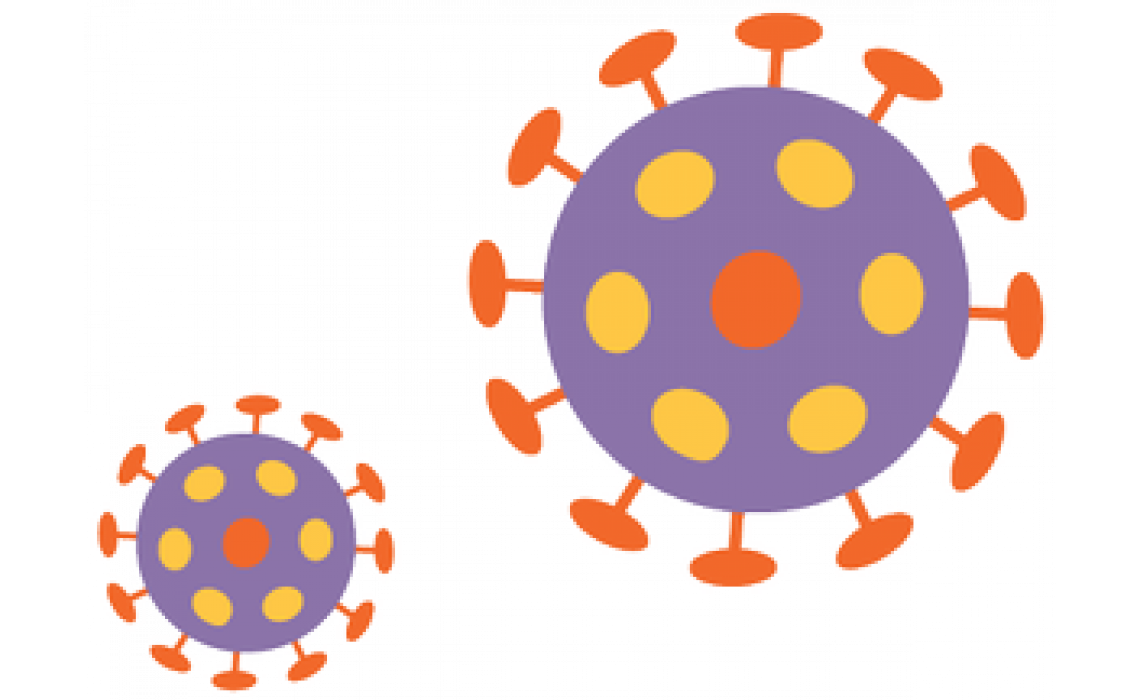COMMON PARASITES, DETECTION METHODS, AND INTERVENTION CONSIDERATIONS
Protozoa are microscopic one-celled organisms that can live freely in the environment or be parasitic in nature (2). Common examples of protozoa seen in clinical practice include giardia and cryptosporidium, and less commonly encountered strains of entamoeba such as E. histolytica.
Tapeworm, roundworm, and flukes make up the bulk of parasitic worms in the category of helminths. These are multicellular organisms visible to the naked eye and can be free living in the environment or parasitic in nature. Helminths are less commonly encountered in clinical practice compared to protozoa.
The last group of human parasites are called ectoparasites. This group includes the common malaria carrying mosquito. From a parasitic infection standpoint, malaria is a serious public health pathogen in certain regions globally where the infection leads to hundreds of thousands of deaths every year (3).
In this article I highlight specific parasites often encountered in a general integrative and functional medicine clinical practice: Blastocystis hominis, Cryptosporidium parvum, Dientamoeba fragilis, Entamoeba histolytica, and Giardia lamblia.

There are many different species of Blastocystis that can infect humans (4) with B. hominis being most common. The medical condition blastocystosis is caused by a Blastocystis infection. Blastocystis is a worldwide pathogen transmitted through fecal-oral exposure and can be a contaminate of certain water supplies.
The B. hominis and others are protozoal, single-cell parasites that can invade and inhabit the digestive system and lead to various gastrointestinal problems, including irritable bowel syndrome (5).
Symptoms linked to Blastocystis infection, including B. hominis (6), can vary from mild to severe. Most commonly, the presence of B. hominis can lead to abdominal pain, anal itching, constipation, diarrhea/loose stools, and flatulence.

Cryptosporidium parvum (C. parvum) is one of the most important waterborne pathogens seen in developed countries and has been responsible for large disease outbreaks. It is one of several species of Cryptosporidium parasites to cause cryptosporidiosis (7).
Within the digestive system it can lead to significant mucosal damage as it behaves as an intracellular pathogen migrating into and out of epithelial cells. In some cases, diarrhea can be extreme with up to 10 to 15 episodes per day. There is a concern for electrolyte loss and dehydration, particularly in individuals with immunocompromised disease. Abdominal pain, nausea, vomiting, and loss of appetite are common too.

Dientamoeba fragilis is a single-celled parasite sometimes found in the gastrointestinal tract and seen on comprehensive digestive stool analysis. The infection of D. fragilis called dientamoebiasis. It can be associated with chronic diarrhea, traveler’s diarrhea, fatigue, and even failure to thrive in children (8).
Literature descriptions of D. fragilis are conflicted in that some list this organism as harmless and some list it as a pathogen (9).

Entamoeba histolytica is another single-cell parasite called an amoeba, which moves by a bulging of cytoplasm called a pseudopod and can alter its shape. It is part of the parasite amoebozoan group called entamoebas, which also includes Entamoeba dispar that is often confused with the more pathogenic E. histolytica because of their similarity under microscopic analysis (10).
There is a significant difference in pathogenicity between E. dispar and E. histolytica with histolytica known to infect between 35 to 50 million people globally leading to more than 55,000 deaths annually (11).
E. histolytica causes tissue destruction within the intestinal tract which leads to clinical disease, e.g., inflammation. One of the biggest concerns over E. histolytica infection is its ability to become invasive in the body. Abscess formation can occur outside the liver, including the lungs, brain, and spleen. Fortunately, E. histolytica infections are rare compared to the other pathogens discussed in this article.

Giardia lamblia is a flagellated protozoan because of its characteristic flagella (tail-like structure) it uses to mobilize. There are approximately 40 different strains of Giardia that have been isolated from various animals (12).
It causes most of its problems within the small intestine with intense symptoms being diarrhea, bloating and excessive gas, cramping, urgency, nausea, and greasy stools. Because of its prevalence within the small bowel, the villi become damaged with atrophy and flattening. This leads to poor digestion of carbohydrates, fats, and proteins leading to malabsorption. Lactose intolerance can persist even after successful eradication of Giardia (13).
Detection Methods

The common ova & parasite (O&P) detection method (aka parasite fecal exam) is done through microscopy. This method takes a fecal sample, concentrates it, stains it for enhanced visualization of parasite cell structures, and examines under microscope. This type of stool analysis is considered low in technology compared to other methods such as antigen detection or polymerase chain reaction (PCR) but can be highly accurate for a wide range of parasites (14). The accuracy of this test is largely dependent on the skill and experience of the technician. One of the major upsides of this method is being able to differentiate between past and current infections.
Comprehensive Digestive Stool Analysis (CDSA) tests are popular because they provide various markers for overall digestive system assessment and function, e.g., inflammation, digestion imbalances, normal bacteria. They are also comprehensive in evaluating for various pathogenic bacteria, parasites, and fungal species.
Many laboratories will perform the O&P fecal examination through microscopy, in addition to antigen (immunogenic substance) detection, while other labs will profile their analysis via PCR. Some labs provide a combination of methods.

An antigen is a substance, e.g., protein, usually foreign to the body, that stimulates an immune response (15). Many things can be antigens such as endogenous or exogenous toxins, bacteria, and foreign cells. Parasites with their unique cellular configurations such as cell membranes, etc. can be antigenic (16).
Many of the parasite antigens are found on the surface of cells and are highly specific to each individual parasite. An example would be the antigenic variability between Entamoeba dispar (non-pathogenic, relatively) and Entamoeba histolytica (pathogenic). Both have similar appearance as seen through microscopy but are more easily differentiated by antigen analysis (17).

PCR is involved in amplification of DNA sampling in blood, feces, and urine (18). The process helps to identify unique genetic sequences linked to various pathogens, including bacteria, parasites, fungus, and virus.
One of the potential drawbacks to PCR analysis is difficulty in differentiating between an active infection or past exposure to a parasite with genetic information retained in the system, but the infection being resolved. Therefore, with any test it is always important to correlate the test findings with the clinical presentation of the patient and this is especially true of PCR.

There are other testing methods for parasite detection. Typically, these are not considered as sensitive as stool microscopy, antigen analysis, or PCR. Here are some additional options:
Blood serology – this method measures for antibodies (19) to a parasite(s) often through IgG immunoglobulin. Some laboratories only have a limited number of parasites they test for through antibodies. IgG can be reflective of a past infection and not necessarily an active problem. Additional antibodies such as IgA and IgM can be utilized to assess for more of an acute problem.
Saliva antibodies – some laboratories provide saliva antibodies such as IgA in the detection of parasites.
Blood smear – this method is important for blood-borne parasites like malaria (20) but is not useful for primary digestive system parasites like Giardia lamblia or Cryptosporidium parvum.
Intervention Options with Examples

This antibiotic is commonly used for various parasitic infections, including Giardia lamblia and Entamoeba histolytica. It also has effectiveness against other pathogens such as Fusabacteria, Bacteroides, and Clostridia difficile (21, 22).
It is commercially available in both capsule and oral suspension form from most pharmacies, and the safety profile, ease of use, and recognition and coverage from most insurance companies make it an attractive antibiotic for various parasitic infections, e.g., Giardia lamblia. Pediatric use is common using the oral suspension.
The typical dosage amounts of metronidazole for adults are 250mg to 500mg three times daily for 5 to 7 days. Pediatric amounts calculated using 5mg/kg per dose are often used for the same time frame.

Nitazoxanide is a broad-spectrum antibiotic primarily used for acute Giardia and Cryptosporidium infections, but it does have broader application as an anti-helminthic and antiviral (23, 24). Approved for generic use in the United States in 2020 (25), The availability of Alinia for more than just acute diarrheal disease from protozoal parasites has gained wide acceptance.
The standard dosing for Alinia based on age, as well as oral tablet form or oral suspension is as follows:
Adults (and children 12 years and older), 500mg orally twice daily for 3 days
Children (4 years to 11 years), 200mg orally twice daily for 3 days
Children (1 year to 3 years), 100mg orally twice daily for 3 days
Alina oral suspension comes in 100mg/5ml

Botanicals for the use of eradicating various parasite infections have a long history of use in herbal medicine. The same is true of bacterial and fungal infections, and there is considerable overlap in a botanical’s ability to adversely affect the survivability of various pathogens.
Either the whole plant or components of a plant may contain various compounds, e.g., active substances, that provide antimicrobial properties, i.e., either inhibitory (fungistatic or bacteriostatic) or killing (fungicidal or bacteriocidal). Many of the “static” and/or “cidal” effects of botanicals (e.g., whole plant or components) are also applied against parasitic pathogens.
Black Walnut

Black walnut (Juglans nigra) is a type of walnut (American walnut) that contains a compound called juglone that is reported to be cytotoxic to various parasites (26). Its primarily mode of action is through expelling various parasitic worms, although it does have inhibitory enzyme activity against parasite cell metabolism.
Bilberry

Bilberry is an edible fruit from the plant species Vaccinium myrtillus. The berry has similarities to the American blueberry and goes by various names such as “wimberry”, “wortleberry”, and European blueberry (27). Much of the beneficial effects of bilberry extract focus on its antioxidant and circulatory properties for improved cardiovascular function. However, the phenolic properties of bilberry extract are known to affect the growth of certain bacteria such as




